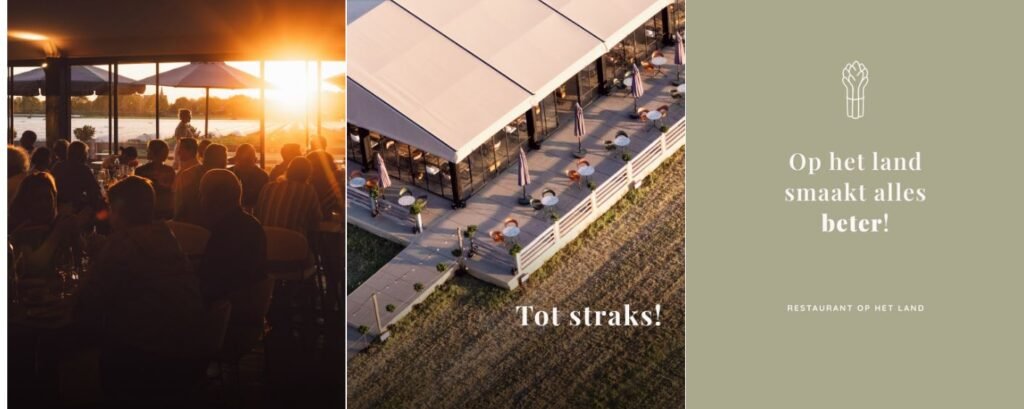
Dining habits have changed significantly over the last few years, moving away from formality and toward experience. Restaurant Op Het Land in Wouw is one of the best examples of this transition. This temporary pop-up offers a surprisingly immersive fusion of culinary skill and rustic simplicity, nestled between rows of ripening vineyards and lush asparagus beds.
Every May, for a single month, West-Brabant’s rural setting is transformed into a highly intimate culinary festival. Carefully crafted by returning entrepreneur Frenk Theuns, the 2025 edition is especially inventive, fusing design, cuisine, and nature with remarkable clarity. It is immediately apparent that this is more than just a meal—it is a sensory retreat—as soon as guests enter the dimly lit pavilion, which is surrounded by views of dusky vines and freshly harvested greens.
Restaurant Op Het Land – Overview
| Category | Details |
|---|---|
| Concept | Seasonal fine dining pop-up among asparagus fields and vineyards |
| Location | Bergsebaan 12B, Wouw, West-Brabant, Netherlands |
| Operational Dates | 10 May – 9 June 2025 |
| Hours | Lunch: 12:30–13:30 |
| Head Chef | Patriek Doelen (Wijnrestaurant Mes Amis, Maastricht) |
| Organizer | Frenk Theuns, local culinary events specialist |
| Highlight Menu Item | White asparagus with regional wine pairings |
| Price Range (4–7 courses) | €59.50 to €89.50 (without wine) |
| Reservation Website | www.restaurantophetland.nl |
| Seating | Indoor pavilion (terrace for finger food only, no reservations allowed) |
Theuns has transformed this year’s event into something that can compete with the finest of Amsterdam’s permanent fine dining establishments by working with Patriek Doelen, the renowned chef from Maastricht, and his skilled culinary staff. Although Doelen’s experience at Wijnrestaurant Mes Amis speaks for itself, his versatility and awareness of new terroir make his brief relocation to Wouw especially advantageous. His team has translated their signature flair into a completely new setting while cooking in uncharted territory, creating dishes that feel both rooted and daring.
The end product is a menu that tastes even better than it reads. Imagine a hint of passionfruit, green asparagus, Sechuan pepper, and lightly smoked salmon. Or steak tartare with chive oil, earthy mushrooms, and fermented kimchi, all expertly balanced. The duality of land and sea is encapsulated in one especially memorable dish, ravioli stuffed with shellfish, which is served draped in bisque and punctuated with a bitter postelein and a singularly sweet shrimp. The event’s dedication to celebrating place is further demonstrated by the optional pairing of each course with wines from nearby Dutch vineyards.
Additionally, the offering is equally well-prepared for vegetarians. Carrot flowers with orange zest and tandoori spice are so adaptable that they can turn a common root into a major attraction. Other dishes, such as the artisjok with chanterelles and watercress or the meiraap with truffle Hollandaise, are composed with both color and restraint, subtly showcasing the depth of the season without being overly dramatic.
The way that Restaurant Op Het Land blends luxury and realism is what makes it unique. This restaurant serves as a welcome reminder that dining can still be surprising without being ostentatious in the midst of Europe’s fine dining comeback, where pretentious plating and Michelin fatigue have started to fade. It is not inflexible and can be improved. The designers of this concept allow the land to literally speak by removing extraneous elements.
This idea is also a masterclass in event branding from a business perspective. Demand is driven by scarcity, which Theuns has created by restricting availability to only 30 days. More than 80% of the tables were already reserved during the first week of 2025, and social media buzz has been greatly increased by word-of-mouth. Many visitors come from nearby cities such as Breda, Antwerp, or even Amsterdam, and they describe the experience as poetic, peaceful, and “emotionally delicious.”
This pop-up stands out from the others because of a very human quality. For the duration of the pop-up, Doelen’s crew resides nearby and is frequently seen riding their bikes to the tent or mingling with patrons after the service. Because of this emotional and physical closeness to the community, the entire experience feels more relational than transactional. It serves as a reminder that food is more than just a product; at its best, it is a shared hospitality experience.
A keen sense of vision is evident even in Theuns’ approach to hospitality logistics. In order to promote spontaneity and fluidity, terraces are available for informal finger food but cannot be reserved. Inside the main pavilion, formal lunch and dinner services take place amidst the sound of clinking glasses and soft lighting. Every table is welcomed with genuine warmth rather than staged elegance. It’s especially evident that comfort is never overshadowed by attention to detail.
Nevertheless, considering what is provided, the prices are still remarkably reasonable. A four-course meal costs €59.50, and a seven-course meal with wine pairing costs €160. This feels not only justified, but refreshingly honest in a time when €20 cocktails are becoming more and more common. It’s worth the money and the memory because of the food, the scenery, and the peaceful rhythm of the countryside.
The idea has developed without losing its allure since its initial iterations in 2018 and 2019. Subtle design adjustments, better acoustics, and improved service flow are added annually. The tent arrangement this year feels more well-planned, providing intimacy without feeling confined. The service staff, who are skilled at both presence and pacing, leads customers through the meal with a smoothness that is incredibly effective without ever feeling hurried.
Restaurant Op Het Land has established a devoted customer base and demonstrated that culinary storytelling can flourish anywhere, even in a field, by maintaining strategic consistency. Additionally, it embodies the ideal of what pop-up restaurants strive to be by utilizing regional wines, local ingredients, and the skills of a visiting culinary team.
